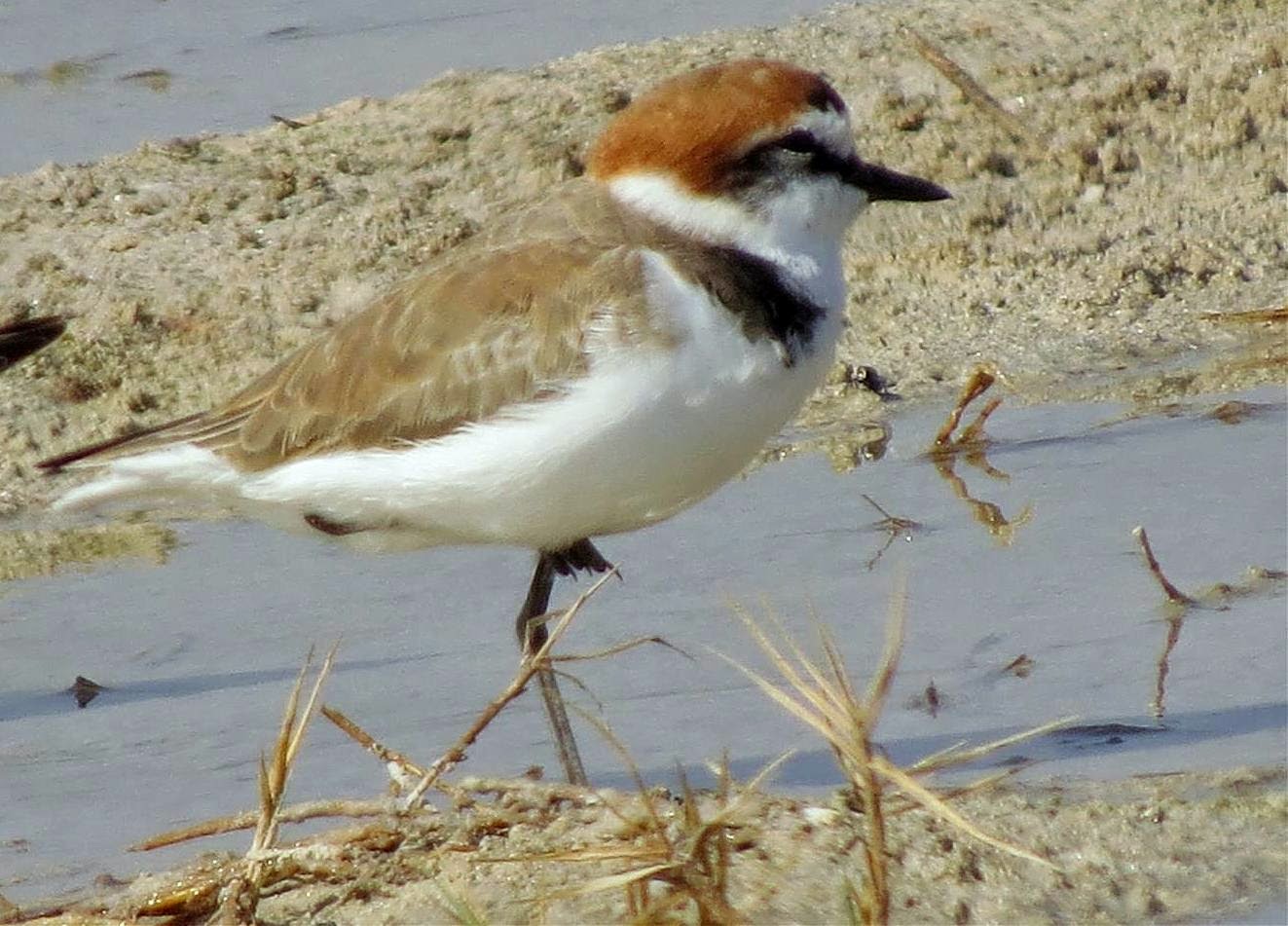Nevertheless, you can travel round the 6 kilometre perimeter and look inwards. I did this on the east, north and west sides. The main road is to the south.
pied cuckoo in the shade
pied cuckoo in the open
house sparrow
These birds are not interested in houses and keep to trees. Their habits remind me more of Spanish sparrow and of desert sparrow.
view of the farm from the east side
After the tree I continued round the northern perimeter. This side of the farm is most cut and fallow at the moment. It is attracting species that like drier terrain than the rest of the farm.
It was here I observed my first tawny pipit in Oman. Luckily it was standing on a high stone otherwise it would not have been seen from the perimeter.
tawny pipit
I had only seen one northern wheatear since arriving in Oman but there were four of them visible over the fence on the east side.
northern wheatear
Although I only counted about 150 yellow wagtail from the side, I am sure the farm must have more than a thousand.
yellow wagtail
It would be a major job recording all the different sub-species present.
yellow wagtail (feldegg)
The birds of prey were varied. I saw two greater spotted eagle, an eastern imperial eagle, four marsh harrier and two common kestrel.
kestrel
Turkestan shrike
Still on the east side were a flock of resting blue-cheeked bee-eater.
blue-cheeked bee-eater
squacco heron
I don't know where this was a mating ritual or a young parakeet being fed by a parent. Certainly doves do this as a mating ritual. This action was repeated several times.
rose-ringed parakeet
Tens of barn swallow were observed on the west side.
barn swallow
aucheri - Asian grey shrike
Unfortunately no sociable lapwing were observed but they must surely come soon. Now Jarziz farm is closed, Sawnout farm is there main wintering option in Dhofar.
grey plover
East Khawr (Khawr Dahariz to those of us who live in Salalah) is very close to Sawnout farm. Before going to the farm I paid my daily visit to the khawr.
I din't notice any radical change again. There was a very nice grey plover among the hundreds of waders.
Kentish plover in breeding plumage
Two male Kentish plover were in full breeding plumage. I don't know when the local breeding season for this bird is but I'll look out to see if more change.
frontal view of Kentish plover
Last time I blogged on east Khawr I noticed how a curlew sandpiper was adrift from the main body of waders. This time I noticed several of them in the wet sand rather than in the shallow water seeking out food. It looks like its normal species behaviour after all.
curlew sandpiper
Eurasian curlew





















No comments:
Post a Comment